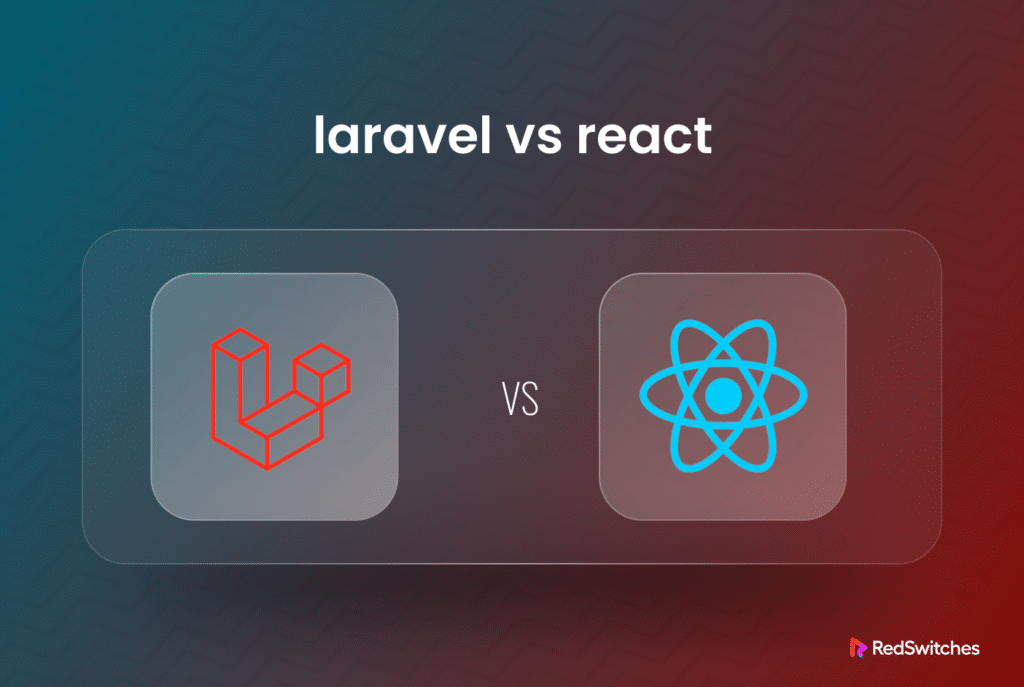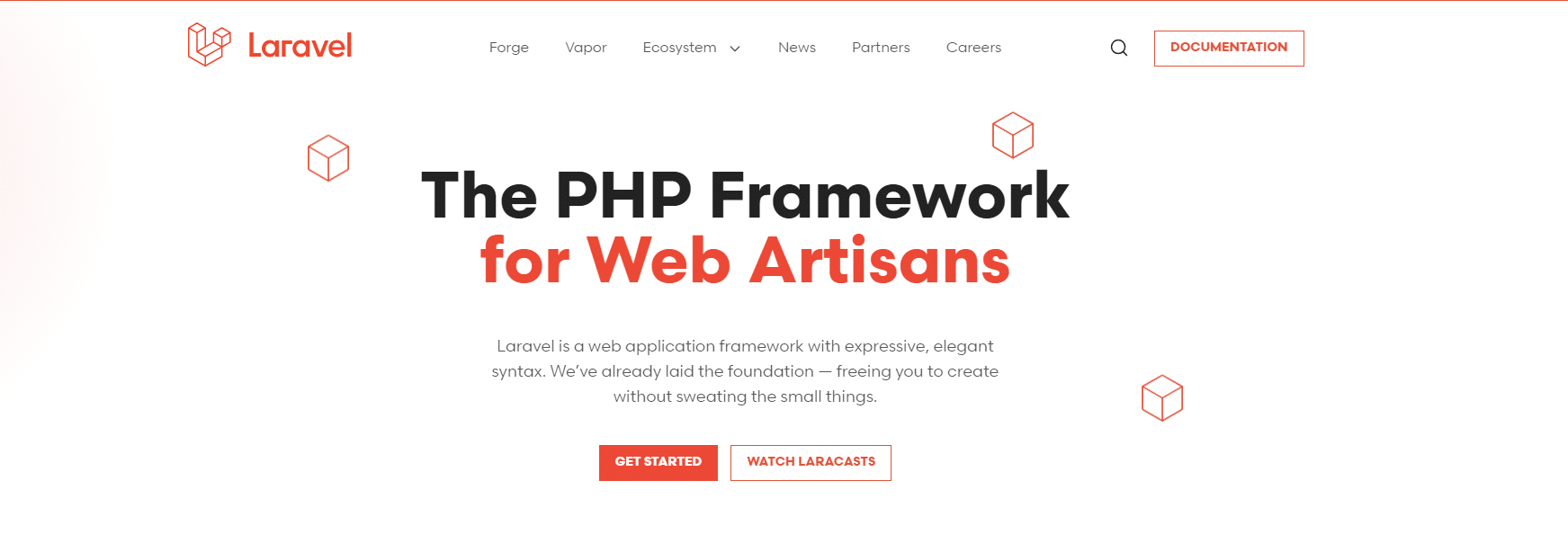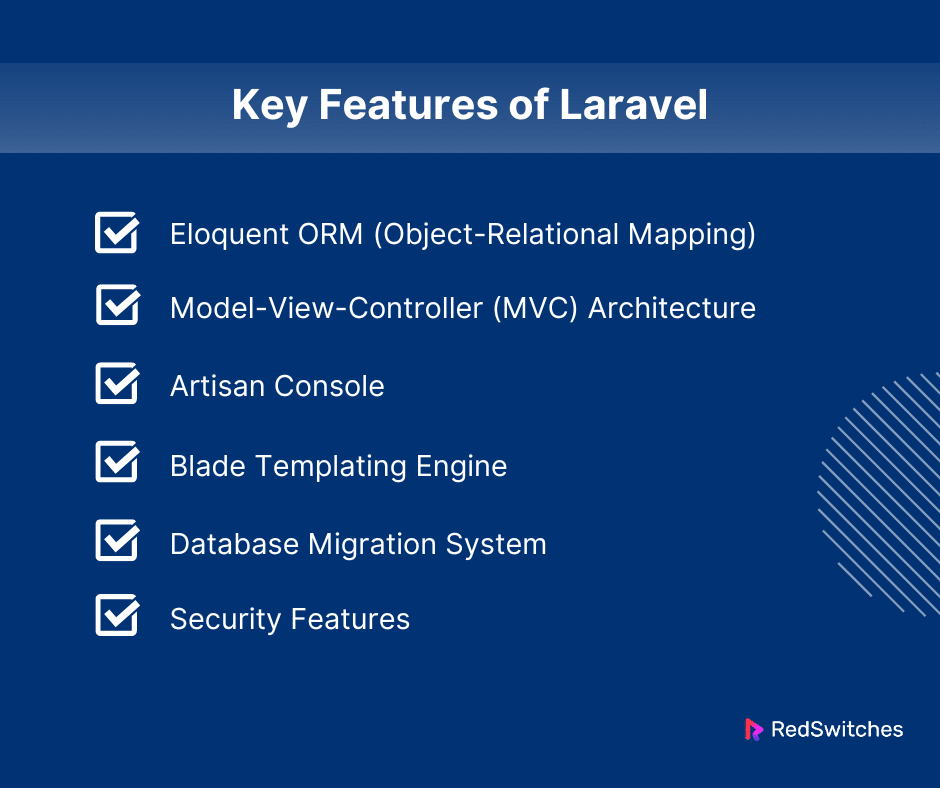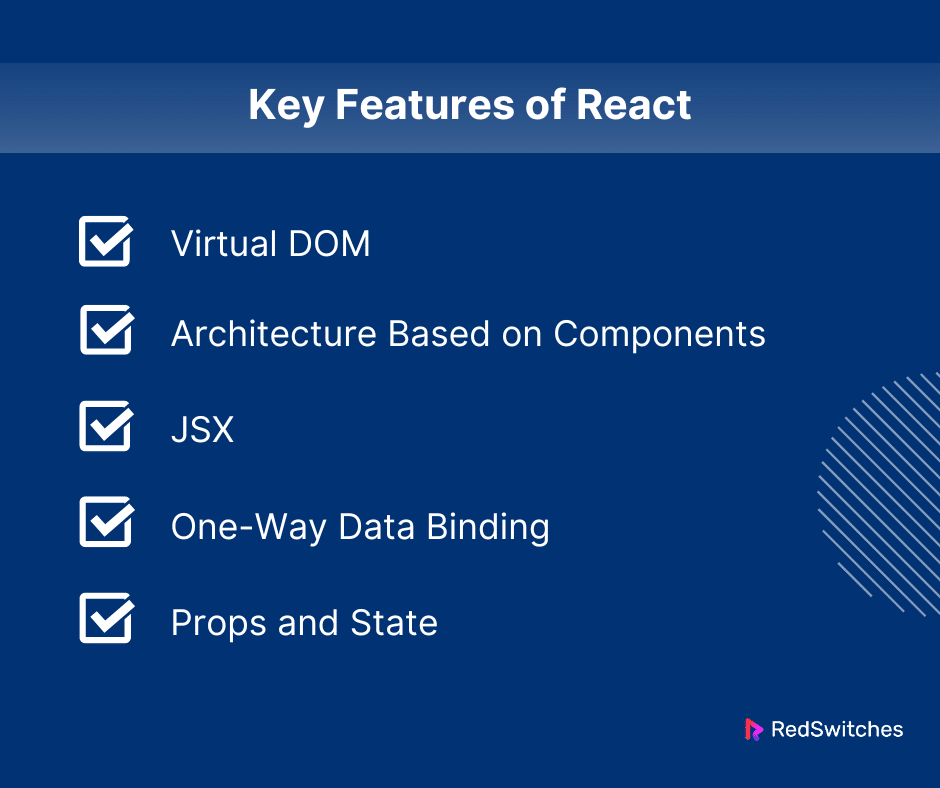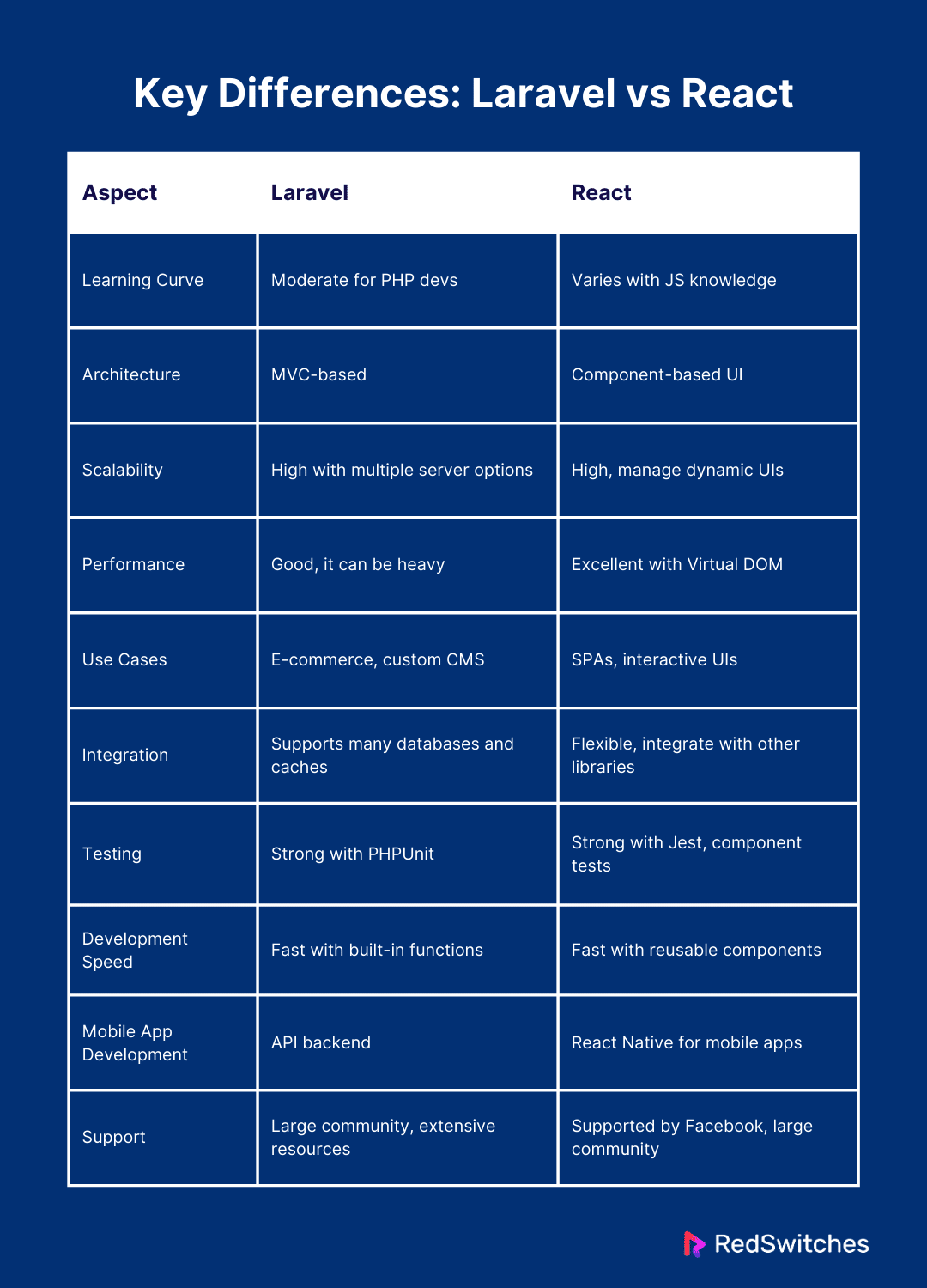Key Takeaways
- Laravel is ideal for server-side applications requiring complex backend functionalities.
- React excels in building dynamic and interactive user interfaces for client-side applications.
- Laravel provides a structured MVC framework that aids in maintaining large codebases.
- React’s component-based architecture allows for reusability and efficient state management.
- Laravel is well-suited for applications that benefit from server-side rendering for SEO and performance.
- React is an excellent choice for single-page applications that require a smooth and responsive user experience.
- Both technologies offer robust ecosystems with extensive community support, making them suitable for a variety of web development projects.
In the ever-changing field of web development, selecting the appropriate framework might be crucial to accomplishing your projects. Laravel and React are two prominent players in this space, both with a devoted fan base and unique advantages. The PHP framework Laravel has a strong back-end structure, making it perfect for creating feature-rich server-side applications. However, Facebook’s JavaScript library, React, excels at building dynamic and interactive user interfaces.
This post delves deeply into both frameworks. It contrasts their features, usability, and scalability. It will help you pick the best one for your upcoming web project. In today’s fast-changing tech world, knowing Laravel and React well is essential. This is true for developers at any experience level.
Let’s dive into the Laravel vs React debate in our blog article.
Table of Contents
- Key Takeaways
- What is Laravel?
- Key Features of Laravel
- Why Laravel?
- What is React?
- Key Features of React
- Why React?
- Key Differences: Laravel vs React
- Which is better? Laravel vs React
- Conclusion
- FAQs
What is Laravel?
Credits: laravel
The model-view-controller (MVC) pattern is used in web applications. It is used with the popular PHP framework Laravel. Taylor Otwell launched Laravel in 2011. Since then, it has become one of the PHP community’s most complete, reliable, and flexible frameworks. Its feature-rich framework and attractive syntax are designed for developers who want to quickly create complicated apps with intricate backend requirements.
Laravel makes everyday tasks easier. These tasks are like routing. They include session management, caching, and authentication. Most online projects use them. Laravel streamlines development by making these tasks easier. It is an elegant ORM. It lets developers work with database objects and relationships using natural, expressive syntax. This is one of its standout features. This ORM is known for its ability to manage complex relationships. It provides simple, flexible support for advanced database operations.
Also, Laravel is integrated with many tools. Examples include Laravel Forge and Envoyer. They help with deploying and maintaining applications. Critical applications cannot afford any downtime. Envoyer’s zero-downtime deployment is essential. Forge helps developers launch apps on many platforms, like AWS, DigitalOcean, and Linode.
Laravel’s extensive ecosystem has many first-party packages. They improve its functionality. Among these are Laravel Echo (for real-time event broadcasting), Laravel Nova (an administration dashboard), and Laravel Horizon (for queue monitoring). Because of these features, plus the large amount of packages and tutorials the community has contributed, Laravel is a very versatile and scalable choice for PHP developers.
Key Features of Laravel
Laravel is well known for having a wide range of solid features that make web application development easier. Every feature is intended to simplify tasks that might otherwise be difficult and time-consuming. The following are some of the main characteristics of Laravel that make it a popular option for developers:
Eloquent ORM (Object-Relational Mapping)
Eloquent ORM is a PHP implementation for database manipulation. It is one of Laravel’s best features. Eloquent has user-friendly syntax. Developers use it to interact with their database objects and relationships. It hides the complexities of managing database transactions. This makes it easier to add, edit, and get data without writing laborious SQL queries. This ORM is famous for its skill at mapping complex relationships and loading data quickly. It also supports many database operations.
Model-View-Controller (MVC) Architecture
The MVC architecture is the foundation of Laravel and is a commonly used design pattern for web applications. It enhances code manageability and makes clearer APIs possible. Laravel uses MVC architecture. It ensures a clear split of tasks. They are between the presentation and business logic layers. This division improves the organization, scalability, and ease of debugging and updating the code developers write.
Artisan Console
The Artisan console offers an integrated command-line interface for Laravel. With Artisan, developers may automate tedious programming operations that would otherwise need to be done by hand. Boilerplate code for new controllers, models, and migrations can be generated with Artisan, speeding up development and lowering the possibility of human error. Additionally, it offers custom commands that programmers can expand to meet the needs of their particular applications.
Blade Templating Engine
The straightforward yet adaptable Blade templating engine in Laravel allows programmers to utilize plain PHP code in their views. The program performs better because blade templates are not recompiled with each page load; instead, they are compiled into ordinary PHP code and cached until changed. In addition, Blade offers handy shortcuts for famous PHP control structures like loops and conditionals, improving the front-end code’s readability and cleanliness.
Database Migration System
The migration system built into Laravel facilitates the organized and version-controlled handling of database schema changes. Migrations enable a team to change the database schema and remain informed about its present state; they function similarly to version control for databases. Migrations are especially useful in team situations because they simply undo changes if something goes wrong.
Security Features
Laravel takes security very seriously and provides several methods for safeguarding web applications. It safeguards against various online threats, including cross-site scripting (XSS), SQL injection, and cross-site request forgery (CSRF). Because Laravel employs prepared SQL statements, injection attacks are not possible. The actual password is never saved in the database since CSRF protection employs hashed and salted passwords enabled by default.
Why Laravel?
Credits: Freepik
Laravel has several strong reasons. It has emerged as one of the most widely used PHP frameworks for making online applications. Its design philosophy puts developer experience first. It also prioritizes application functionality and performance. So, it’s an excellent option for both small and large applications. Here’s why a lot of developers and businesses go for Laravel:
Elegant Syntax and Intuitive API
Developers value readability and simplicity. They like Laravel because of its elegant syntax. It is simple to understand and fun to work with. The framework is easy to read. This helps with ongoing maintenance. It also speeds up development. Laravel’s APIs streamline many usual web app operations. These include user authentication, sessions, and caching. Its straightforward design lets developers focus on adding features. They are not bogged down by complex syntax. This dramatically boosts productivity and cuts the risk of errors.
Sturdy Ecosystem
The ecosystem that comes with Laravel is quite strong, complete with libraries and tools meant to make development jobs easier and developers more productive. Laravel Forge, which makes it simple to provision and deploy web applications across multiple servers; Laravel Envoyer, which guarantees zero downtime during updates; Laravel Vapour, which enables serverless deployment on AWS Lambda; Laravel Nova, which offers an elegant admin panel, and Laravel Echo, which broadcasts real-time events, are all part of this ecosystem.
Extensive Documentation and Community Support
One of Laravel’s best features is its extensive and well-structured documentation, which makes it simple for developers with varying levels of experience to navigate and efficiently use the framework. In addition, Laravel has a sizable and vibrant community that produces a multitude of third-party packages and resources, such as blog posts, tutorials, and forums.
What is React?
Credits: React
Facebook developed and maintains the popular JavaScript library React, mainly used for UI development. Since its 2013 debut, it has become well-known for its practical and adaptable method of creating mobile and online applications. With React, developers can create expansive online apps that update data without requiring a page refresh. Its primary objectives are simplicity, speed, and scalability.
It is limited to application user interfaces that match the MVC template’s view. Because of its simplicity and emphasis on the display layer, React is a popular choice among developers for building dynamic and high-performing user interfaces.
The virtual Document Object Model, or DOM, is at the heart of React’s functionality. It offers a programming API that allows you to customize elements and describe what should be modified. By reducing the number of expensive performance-wise DOM changes, this virtual DOM enhances the application’s speed.
After generating an in-memory cache of the data structures, React calculates the changes and quickly updates the browser’s DOM. React avoids the costly expense of redrawing the entire interface by using a reconciliation process that only redraws the nodes that require updating, resulting in a seamless user experience.
Key Features of React
React is a dynamic and potent JavaScript package with several features to make creating interactive user interfaces more accessible. Here are some of its salient characteristics, thoroughly explained:
Virtual DOM
One of React’s key features is the implementation of a virtual Document Object Model (DOM). An in-memory version of the actual DOM elements is called the virtual DOM. React creates this abstract copy to increase efficiency and performance. React refreshes the virtual DOM first whenever an alteration is made to the application. Then, it applies a diffing method to compare the new virtual DOM with a snapshot of the old virtual DOM, finds the changes, and only applies those changes to the real DOM.
Architecture Based on Components
Encapsulated components that independently maintain state are the foundation of React’s architecture. A complicated user interface (UI) can be constructed by combining various components, each representing a portion of the interface. Because they may be reused wherever necessary, these components speed up the development process but also aid in preserving the application’s consistent design.
JSX
With the help of the React plugin JSX (JavaScript XML), you may write HTML-like syntax straight into your JavaScript code. It is optional, but many people use it. It keeps all of JavaScript’s features while looking like the web page’s design. JSX converts HTML tags into React elements. It makes the structure of app interfaces easier to create and understand. It makes the code easier to read and maintain. This dramatically improves the development experience and streamlines making component trees.
One-Way Data Binding
React forces a one-way data flow, facilitating more straightforward comprehension and debugging because the data inside components travels in a single direction (top-down from parent to child components). This unidirectional data flow ensures that modifications made to child components do not immediately impact their parent components, minimizing side effects throughout the user interface.
Props and State
For properties, props are a means of transferring data from parent to child components, which helps personalize the latter. The child components cannot change props because they are read-only and immutable. On the other hand, the state denotes the current local state or data that the component itself can create and control. States are adjustable, allowing the component to initialize and update them.
Why React?
Credits: Freepik
Due to several vital factors, React has become one of the most well-liked and extensively used JavaScript libraries for creating user interfaces, and its popularity only grows. Here’s a thorough explanation of why developers favor React:
Effective Performance with Virtual DOM
React’s Virtual DOM implementation is a primary factor in its appeal. In traditional web app development, changes to the data structure can lead to direct DOM manipulations. The DOM is slow and can hurt performance, especially in complex apps. React takes JavaScript objects and builds a lightweight DOM tree. It then determines how best to update the browser’s DOM and only renders the changes again.
Reusable Components
The foundation of React is the idea of reusable components. Without changing the existing code, each component has its own structure, behavior, and style. These may be used elsewhere. In addition to quickening the development process, its modular architecture supports application scaling with unified behavior and design. Developers can easily manage big applications. They can do this while keeping an organized and maintainable codebase. They do this by using components. These range in size from a button to an entire application section.
Unidirectional Data Flow
To improve performance and stability, React requires a one-way data flow. Properties (props) in a React application allow data to flow from parent to child components while preventing direct changes to the parent state by the child components. Because side effects don’t propagate between components, the application is more straightforward to comprehend and debug thanks to this unidirectional data flow. Additionally, it streamlines intricate functions like state management and data binding, increasing code predictability and simplifying troubleshooting.
JSX: A Syntactic Sugar
React leverages JSX, an optional syntax extension that gives you access to all of JavaScript’s capabilities while enabling you to create components that closely mimic HTML. JSX integrates the rendering logic and template structure, making it easier to write a component’s structure in a logical and visually manageable manner. This describes the user interface’s layout more intuitively and increases developer efficiency.
Key Differences: Laravel vs React
Credits: Freepik
This section will discuss the core of our blog, namely, the 10 critical differences in the Laravel vs React debate.
Learning Curve
Laravel
The PHP framework Laravel has many features. It is built to handle all parts of web development. These parts include session management, routing, and data processing with Eloquent ORM. The learning curve might be moderate, particularly for developers with prior PHP experience.
React
The learning curve for React might differ significantly based on the developer’s experience level. React is relatively easy to master if you have a good grasp of HTML, JavaScript, and contemporary JavaScript features like ES6 syntax. React’s core ideas are easy to understand. This is especially true for components and the use of JSX. JSX is a JavaScript syntax extension. It allows HTML-like programming.
Architecture
Laravel
MVC is a well-known design pattern. It divides the app into three related parts. It forms the foundation of Laravel. This split makes it easier to maintain. It also aids in managing the development of complex apps. Controllers process user requests, manage models, and choose which views to render.
React
React’s architecture differs greatly from conventional MVC frameworks. It is mainly concerned with making user interfaces. React uses components instead of MVC. Components are the building parts of the app’s user interface. These parts work together to provide intricate user interfaces while also managing their own states.
Scalability
Laravel
Laravel is a solid option for expanding applications because it was created with scalability. When the app’s requirements grow, the framework has many server and cache options. You can easily customize them. Laravel is designed to make it easier to use tools like Redis and Memcached. These tools manage session and cache data. They are essential for keeping the system fast as traffic grows.
React
One of React’s most appealing qualities is its scalability, especially when managing intricate and dynamic user interfaces. Because of React’s component-based architecture, developers can create encapsulated components that independently handle their state. This facilitates task distribution among team members and increases maintainability as the project expands.
Performance
Laravel
For a PHP framework, Laravel performs exceptionally well. However, it is frequently criticized for being a bit heavier than other frameworks or PHP implementations that are either lighter or simpler. Its comprehensive feature set and abstraction layers, which boost development convenience and scalability but may introduce some latency in request processing, are mostly to blame for this perceived overhead.
React
One of React’s most notable qualities is its performance, especially in light of how well it handles DOM updates, which are frequently a bottleneck in dynamic online apps. React reduces the amount of expensive DOM manipulations by using a Virtual DOM. React ensures that the user experience stays fast and responsive even when the program scales or handles many state changes.
Use Cases
Laravel
Building reliable online apps with intricate backend features is a common usage for Laravel. Because of its comprehensive ecosystem, which easily manages high transaction volumes and consumer data while guaranteeing strong security measures are in place, it is perfect for establishing e-commerce systems. It’s also preferred for developing custom content management systems since it offers greater flexibility than off-the-shelf options and can be adjusted to specific business needs.
React
React is a popular option for single-page applications (SPAs) due to its effectiveness in creating dynamic and interactive user interfaces. Its rapid response straight in the browser, facilitated by its ability to alter user interfaces without requiring page reloads, improves the user experience and is crucial for applications such as interactive dashboards and intricate forms.
Integration
Laravel
Laravel is a powerful server-side framework easily integrated with various services and technologies. It natively supports a variety of databases, including MySQL, PostgreSQL, SQLite, and SQL Server, making it simple to integrate with database-driven applications. Laravel’s compatibility with well-known caching backends like Redis and Memcached improves performance, making speedy data retrieval and storage solutions possible.
React
Because of its modular and flexible design, React is a great option for developers who want to work with other libraries and frameworks or integrate sophisticated user interfaces into already-existing apps. Because of its component-based architecture, React components can be added to non-React applications, enabling a gradual adoption strategy.
Testing
Laravel
Laravel is well known for its native support for PHPUnit testing, one of the most widely used testing frameworks in the PHP world. Because the framework is designed with testing in mind, writing and running tests for both unit and feature tests is simple. Several useful testing techniques and tools are offered by Laravel, which makes it easier to simulate typical web application interactions.
React
Because of its component-based architecture, React also offers strong testing capabilities. Libraries like Facebook’s Jest, used to write unit tests, and Enzyme or React Testing Library, which enable more in-depth component-level interaction testing, make testing in React easier. For testing JavaScript code, Jest provides an extensive feature set that includes support for snapshot testing and a robust mocking library.
Development Speed
Laravel
Laravel is well known for its ability to expedite development because of its extensive ecosystem and wide range of built-in functions. Numerous pre-built capabilities in the framework cover standard web development tasks, including caching, routing, authentication, and session management.
React
With its declarative design and reusable components, React greatly accelerates front-end development, especially for sophisticated and dynamic user interfaces. By decomposing the interface into manageable, reusable components that each maintain their state independently, React enables effective project expansion and maintenance.
Mobile App Development
Laravel
Although Laravel is a great backend solution for mobile applications, it is not directly used for developing mobile apps. Mobile apps may manage data transactions and business logic by interacting with its powerful APIs. Because of its effective controllers, native support for data handling and validation, and lightweight and safe routing capabilities, Laravel is a great choice for an API backend.
React
Through React Native, a well-liked framework for creating mobile applications that enable developers to use React in addition to native platform features, React’s ecosystem is extended into the field of developing mobile apps.
Support
Laravel
Because of its sizable and vibrant community, Laravel enjoys a robust and wide support network. Developers can access a plethora of materials, including in-depth documentation, books written by experts, video tutorials, and various online courses designed for novice and seasoned programmers.
React
One of React’s greatest assets is its support network, made possible by Facebook’s assistance and the vast global developer community. This community adds to an ever-expanding library of expertise, resources, and add-ons that improve React’s functionality and user-friendliness.
Let’s summarize it in a tabular format.
Which is better? Laravel vs React
Comparing Laravel and React is hard. They are fundamentally different in web development. Laravel is mainly used for server-side development and web app architecture. This includes routing, sessions, and database management.
React is a JavaScript library. It is designed for creating dynamic single-page applications (SPAs) and other user interfaces. It mostly functions from a client perspective.
Choose Laravel If
- You’re making a feature-rich web app. It will have a strong backend. The backend will manage tasks like data processing, user login, and complex database queries.
- To help with the codebase’s scalable and maintainable organization, you need a structured MVC framework.
- For better search engine optimization and faster initial page loads, server-side rendering is preferred.
- You require extensive backend solutions, such as queues, events, automated testing, and a potent ORM (Eloquent) if you work in a PHP environment.
Choose React If
- You are creating dynamic, interactive user interfaces that update their content without requiring a page reload.
- You like an architecture based on components because it allows you to manage state and reuse code across many application components efficiently.
- For intricate front-end development, you require a scalable solution with reliable state management tools (such as Redux or Context API).
- Your goal is to improve user experience through quick and responsive client-side interactions. React is versatile for full-stack development because it also works with various backend technologies.
Conclusion
In summary, although Laravel vs React caters to distinct domains within web development, the selection between them is primarily contingent upon the specific demands of your project. While React is great at producing incredibly engaging user interfaces, Laravel is best at developing stable, server-side apps. Integrating both technologies can result in robust, full-stack online apps for developers and businesses hoping to take advantage of the best of both worlds. RedSwitches services are a prime illustration of this synergy.
With our top-notch hosting options, we offer an optimized platform that guarantees your apps function flawlessly, safely, and with exceptional performance. We support a variety of technologies, such as PHP for Laravel and JavaScript environments for React. Whether you’re creating a dynamic SPA or a sophisticated business application, your development efforts are facilitated by us.
Let RedSwitches be your trusted partner for deploying your next Laravel or React project. We ensure your applications run on an optimized platform for exceptional performance, security, and scalability.
FAQs
Q. Which is better, PHP or ReactJS?
PHP is used for server-side scripting, but ReactJS is best suited for creating dynamic user interfaces. These two languages have different use cases.
Q. Is Laravel better than NodeJS?
Web developers can use Laravel and NodeJS for different purposes. Laravel is a PHP framework great for backend services, while NodeJS is a JavaScript runtime for frontend and backend development.
Q. Is PHP in demand in 2024?
Yes, even with the rise of newer technologies, PHP will still be in need in 2024, particularly for legacy projects and content management systems like WordPress.
Q. React vs Laravel: What is the difference between Laravel and React?
Laravel is a PHP web application framework, while React is a JavaScript library for building user interfaces.
Q. Laravel vs React: When should I use Laravel for my next project?
Laravel is a great choice when you’re building a complex web application that requires authentication and authorization.
Q. Laravel vs React: Why would I choose React over Laravel?
React is a powerful JavaScript library for creating interactive user interfaces. It may be a better choice for your next project if you’re focused on front-end development.
Q. Laravel vs React: Is Laravel or React more suitable for web development?
Laravel is a full-stack web framework, while React focuses more on front-end development. Choose Laravel to build complex web applications and React to build interactive user interfaces.
Q. Laravel vs React: What are the advantages of using Laravel and React together?
Laravel can be used as the back-end framework to handle server-side logic. In contrast, React can create dynamic and responsive user interfaces, making them a powerful combination for web development.
Q. Laravel vs React: How do I decide between Laravel and React for my next project?
Consider your project’s requirements. If you need a robust back-end framework with authentication features, choose Laravel. If you prioritize front-end development and interactivity, choose React.
Q. Laravel vs React: Can I use Laravel and React together in a single project?
Yes, you can integrate Laravel as the back-end framework and React for the front-end in the same project. This combination can benefit both technologies for a comprehensive web development solution.
